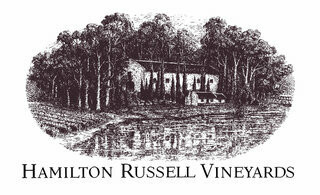Rebels and pioneers, Hamilton Russell Vineyards were the first to grow vines in the cool, maritime region of the Hemel-en-Aarde Valley. Tim Hamilton Russell planted Pinot Noir and Chardonnay on previously uncultivated land in 1976, both rare varieties for South Africa at the time. The site he chose behind the old fishing village of Hermanus allows for unusually classically styled wines, which have garnered the reputation as some of the finest in South Africa and the New World, to be produced near the tip of the African continent.
1994 saw Anthony Hamilton Russell take ownership of the Estate, and extensive soil research was initiated which identified 52 hectares of stony, clay-rich, shale soils as optimal for the individual, expressive style of wine desired. Today, the Estate has 20 parcels of Chardonnay vines, all vinified separately, before blending for consistency of aesthetic, but with the character of the vintage also present. The Pinot Noir plots give Burgundian subtlety, texture and length, which is down to the identification of the shale/gravel soils on which the vines now grow.
Amongst the vines, biodynamic practices are beginning to prevail; nitrogen fixing lupins and earthworm tea are used to restore vital microbes to the soil, with biodiversity islands being used to bring beneficial plants to the area. In the winery, Anthony and winemaker Emul Ross seek to make wines which demand something from the drinker, as fine literature does from the reader.








